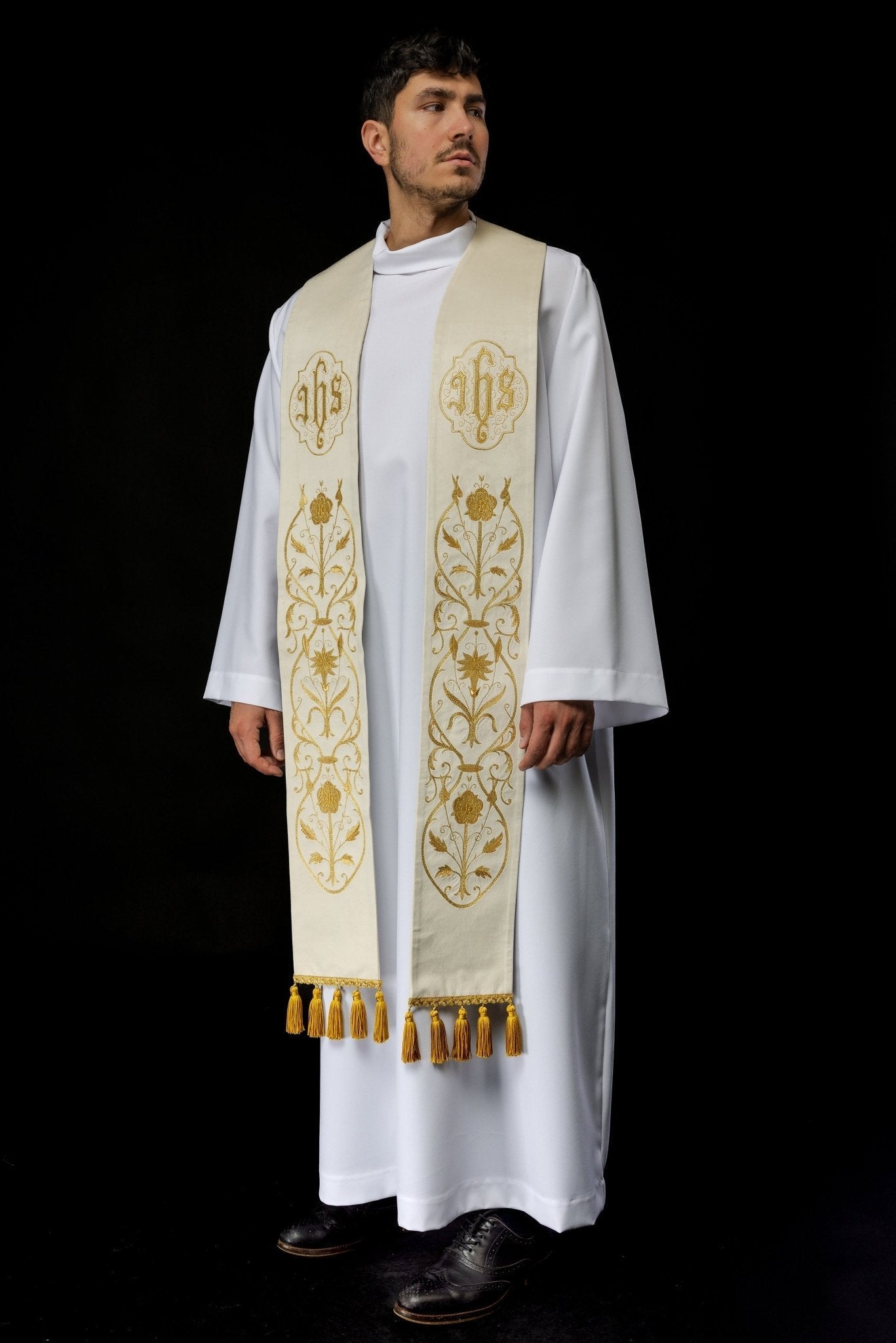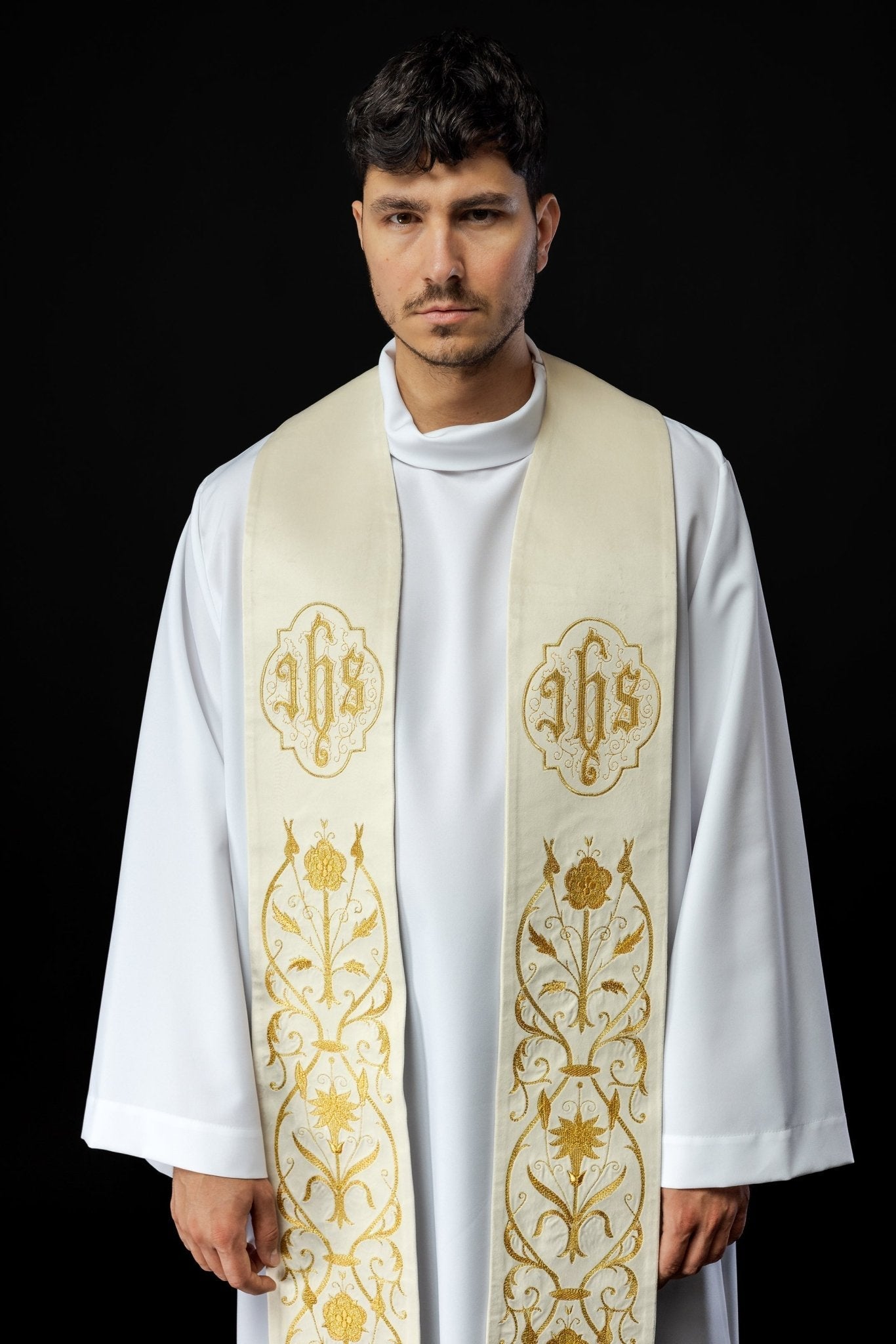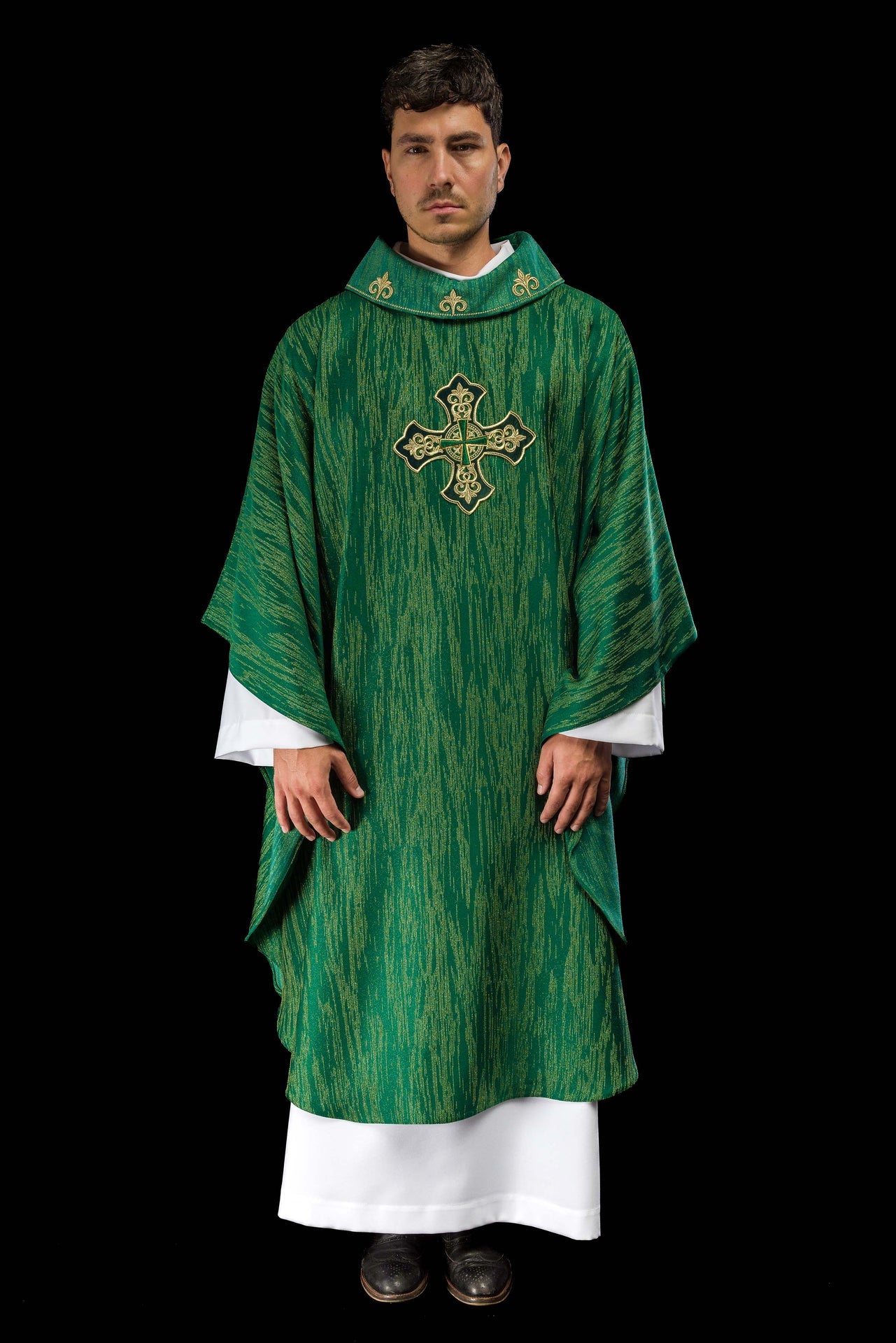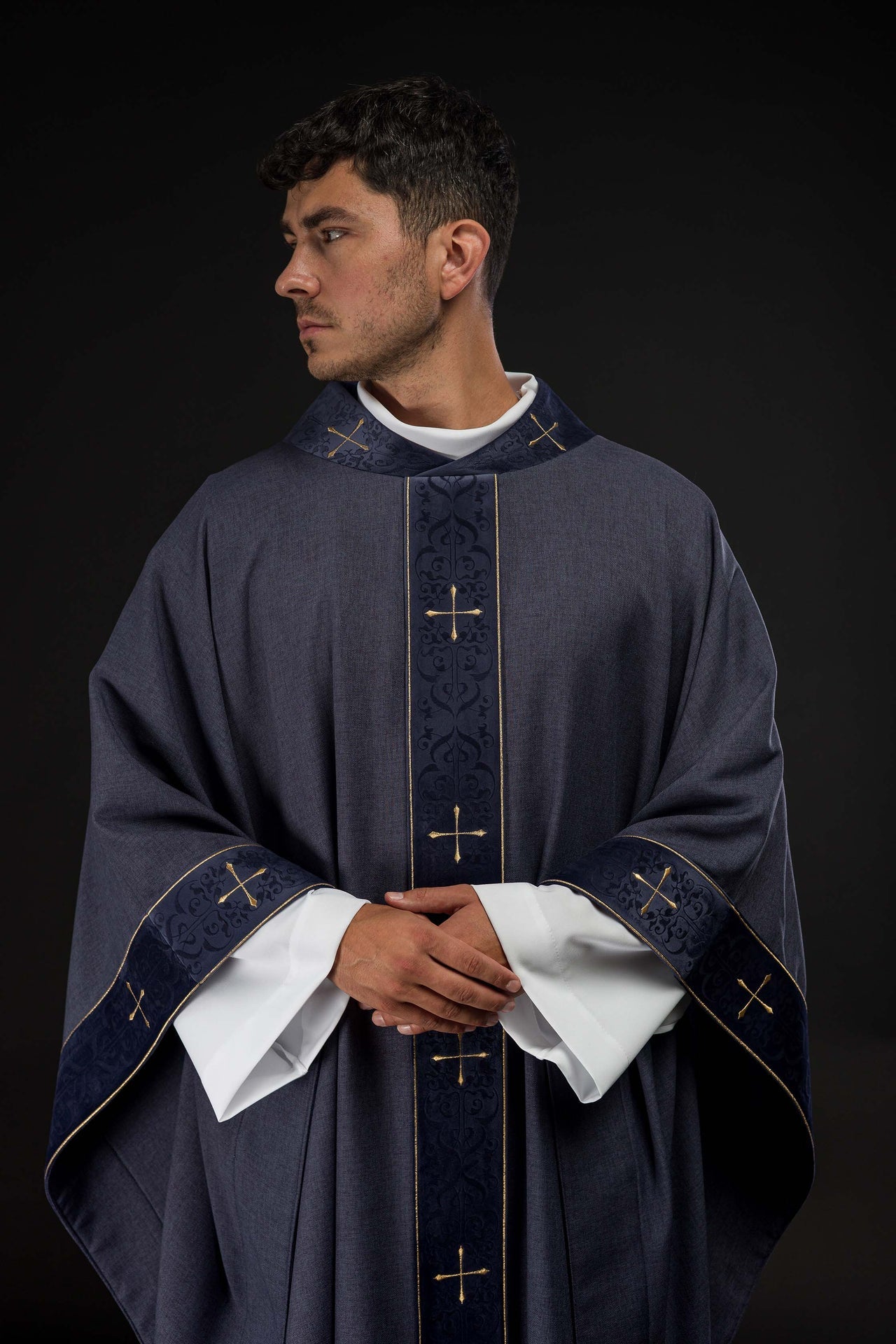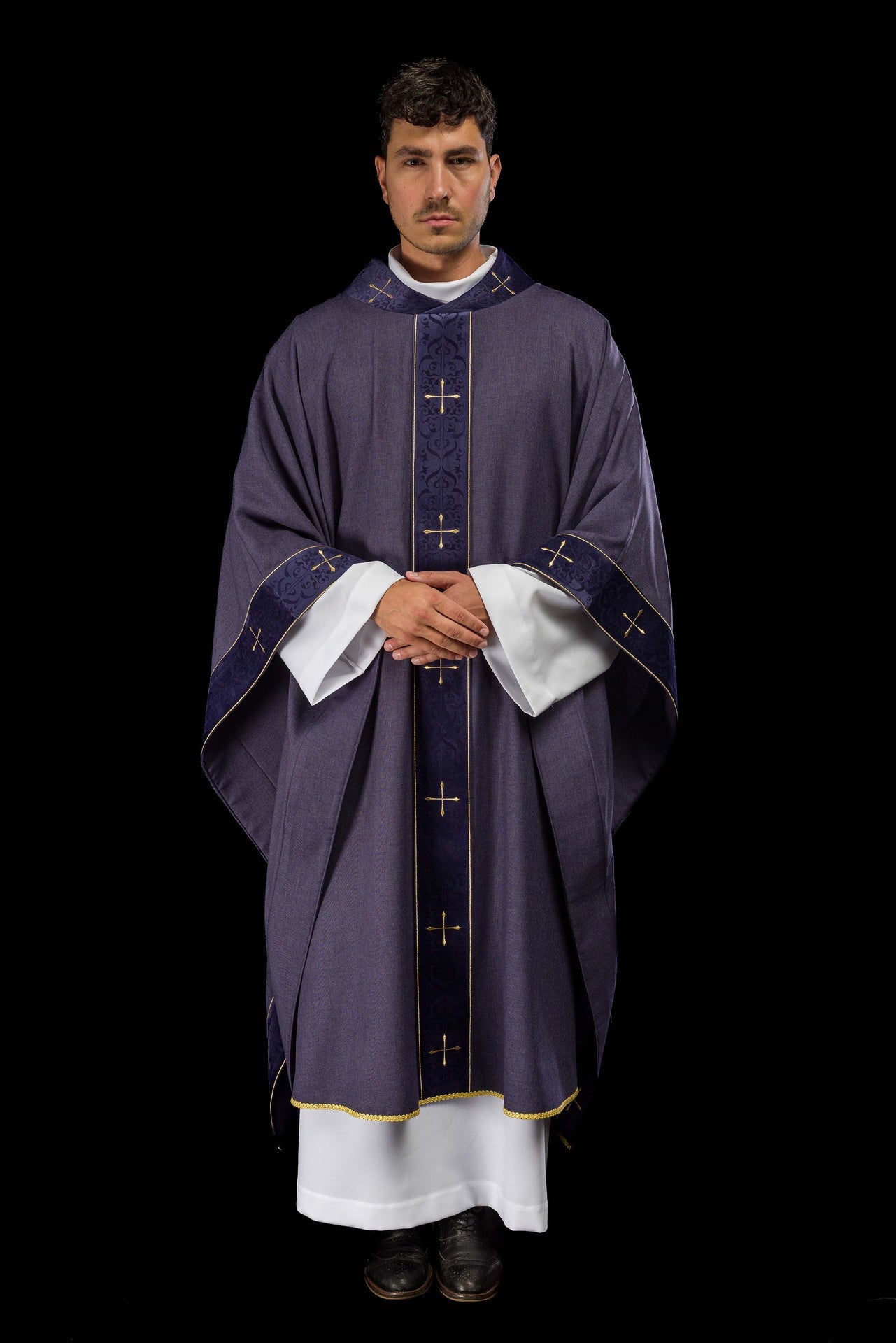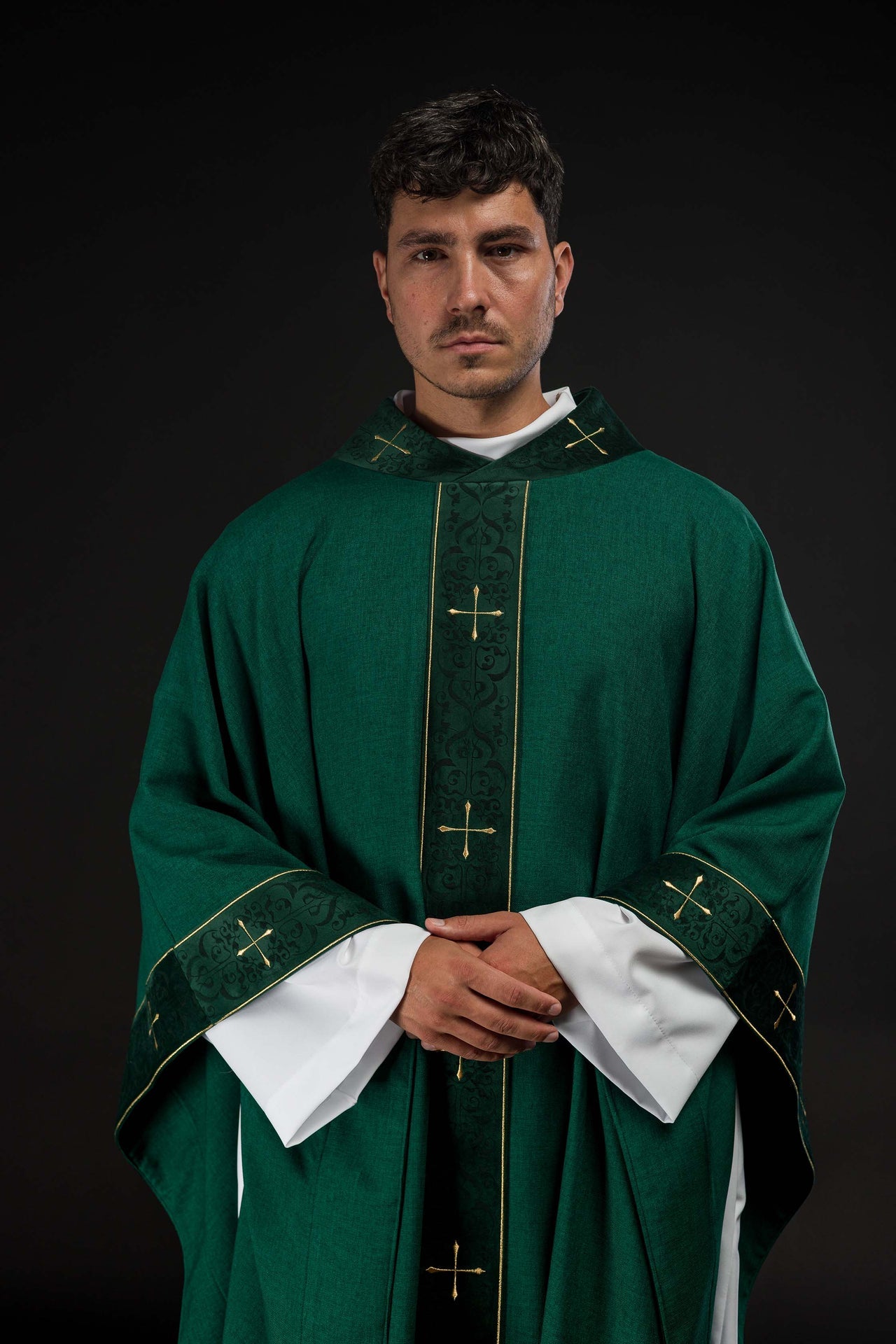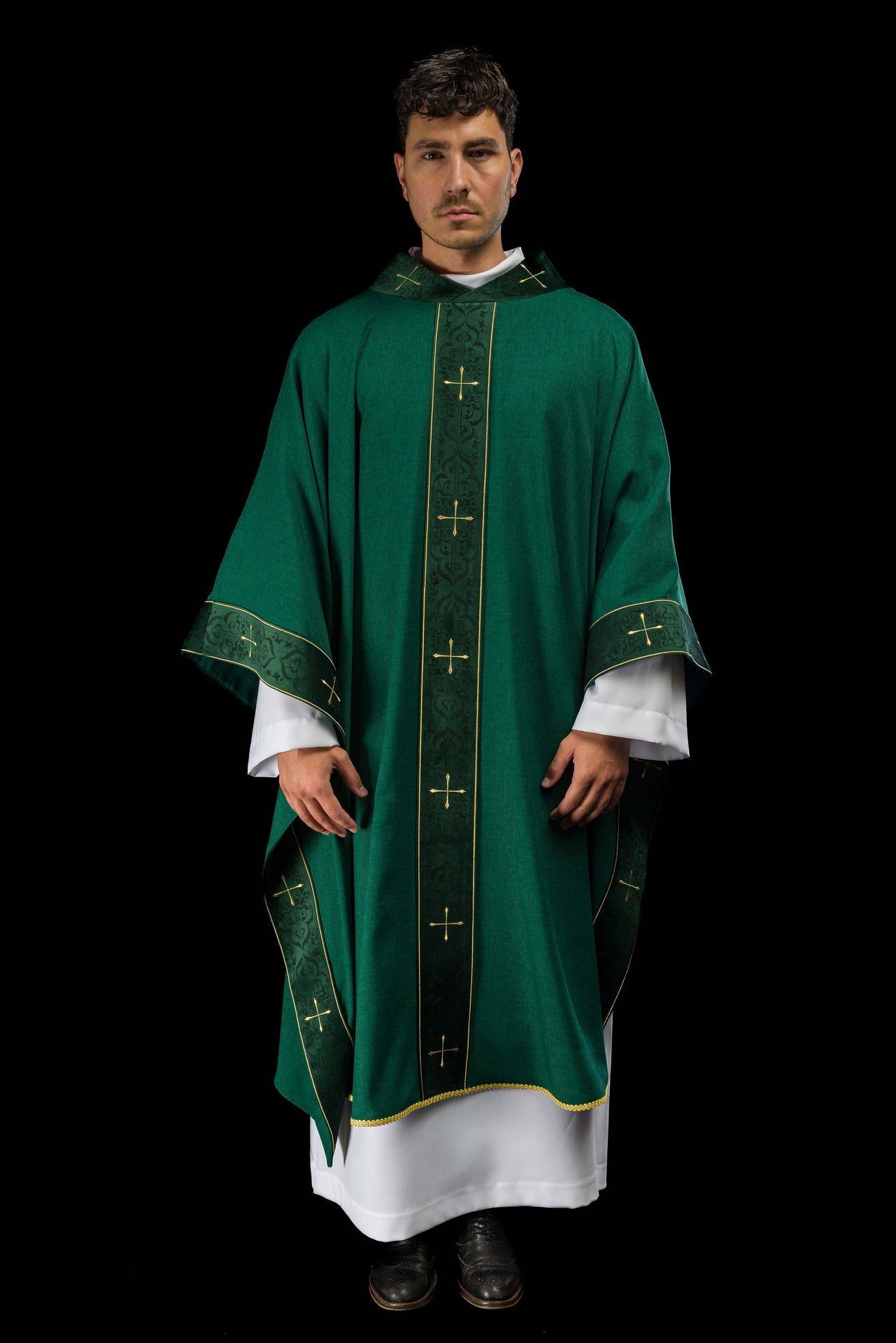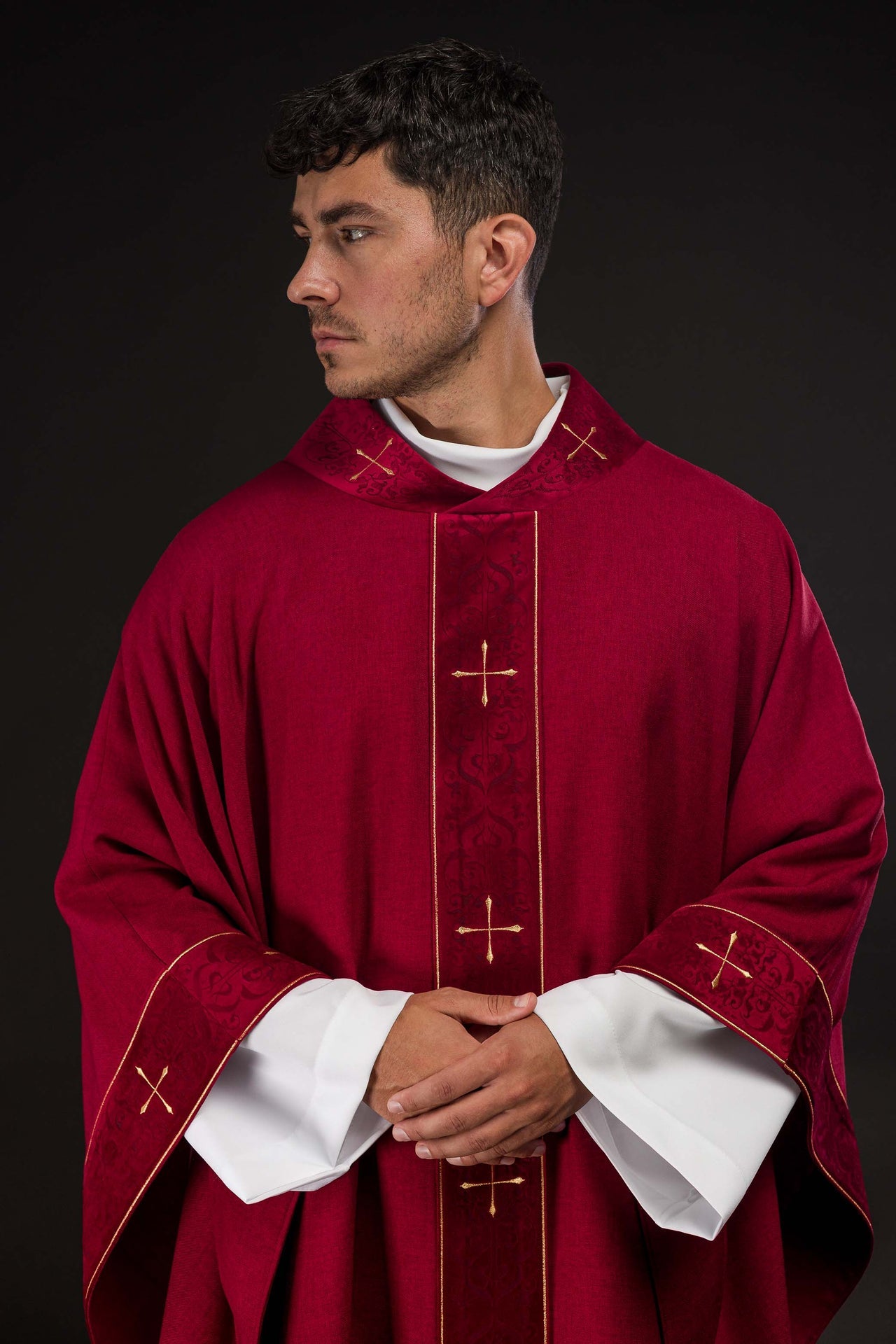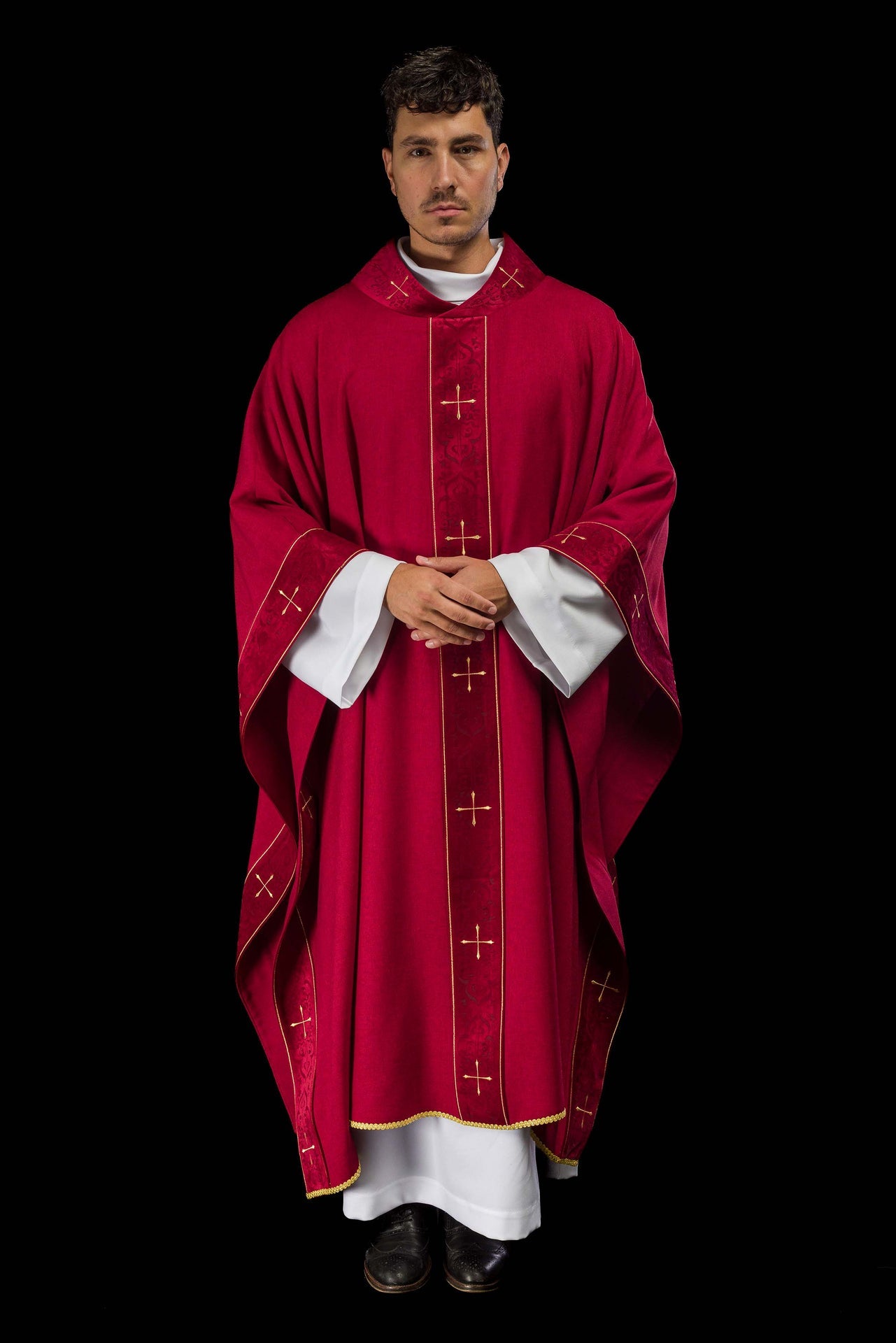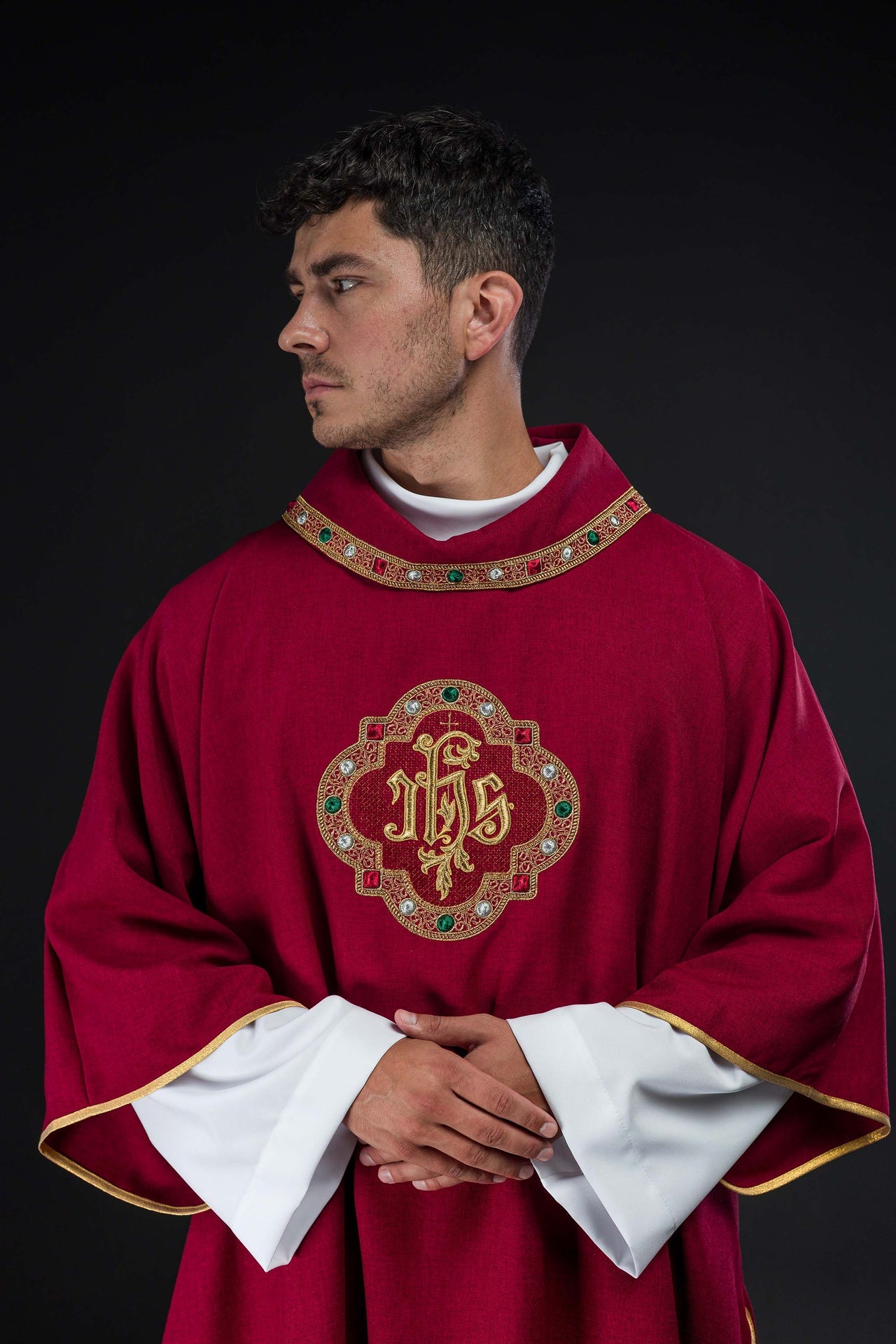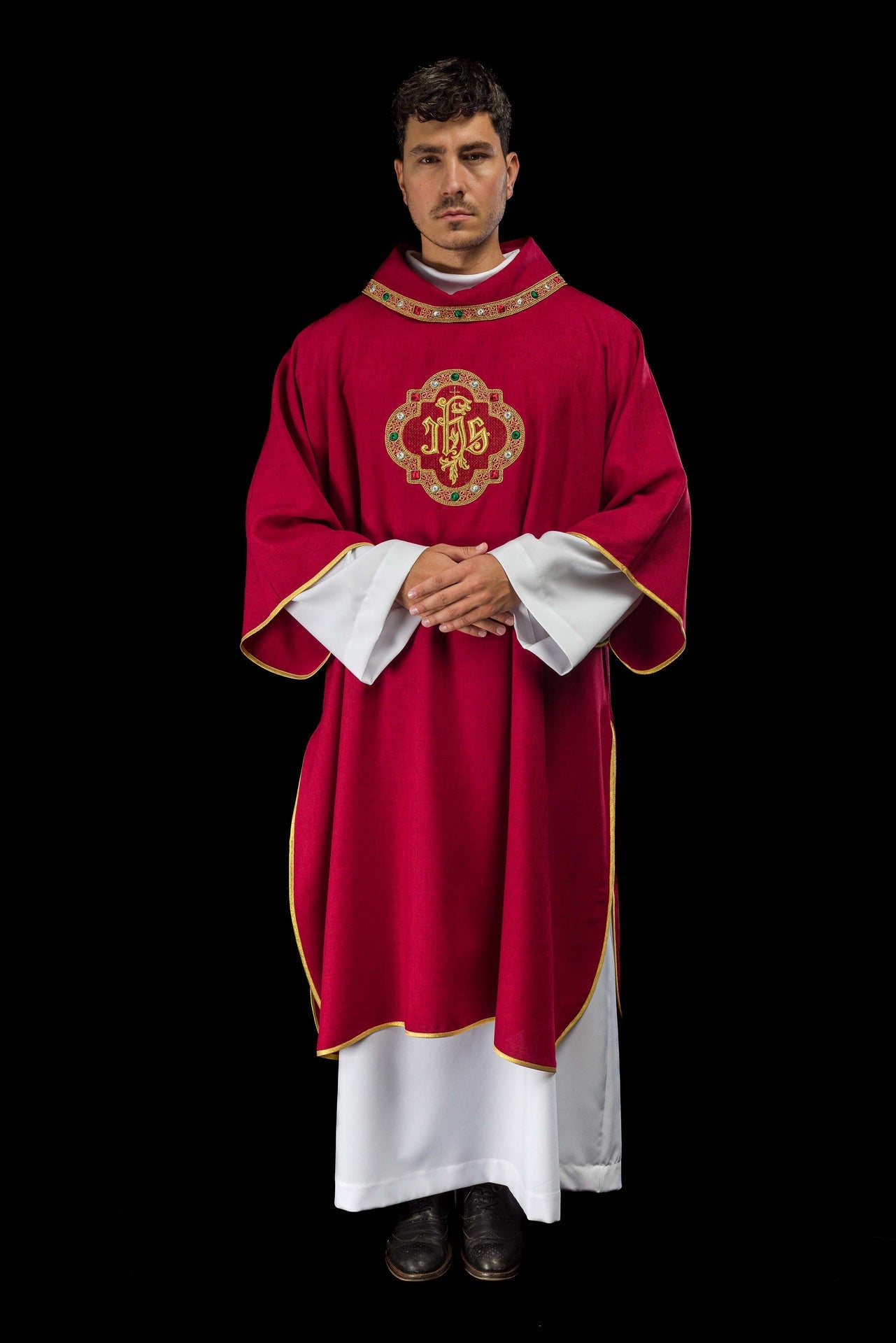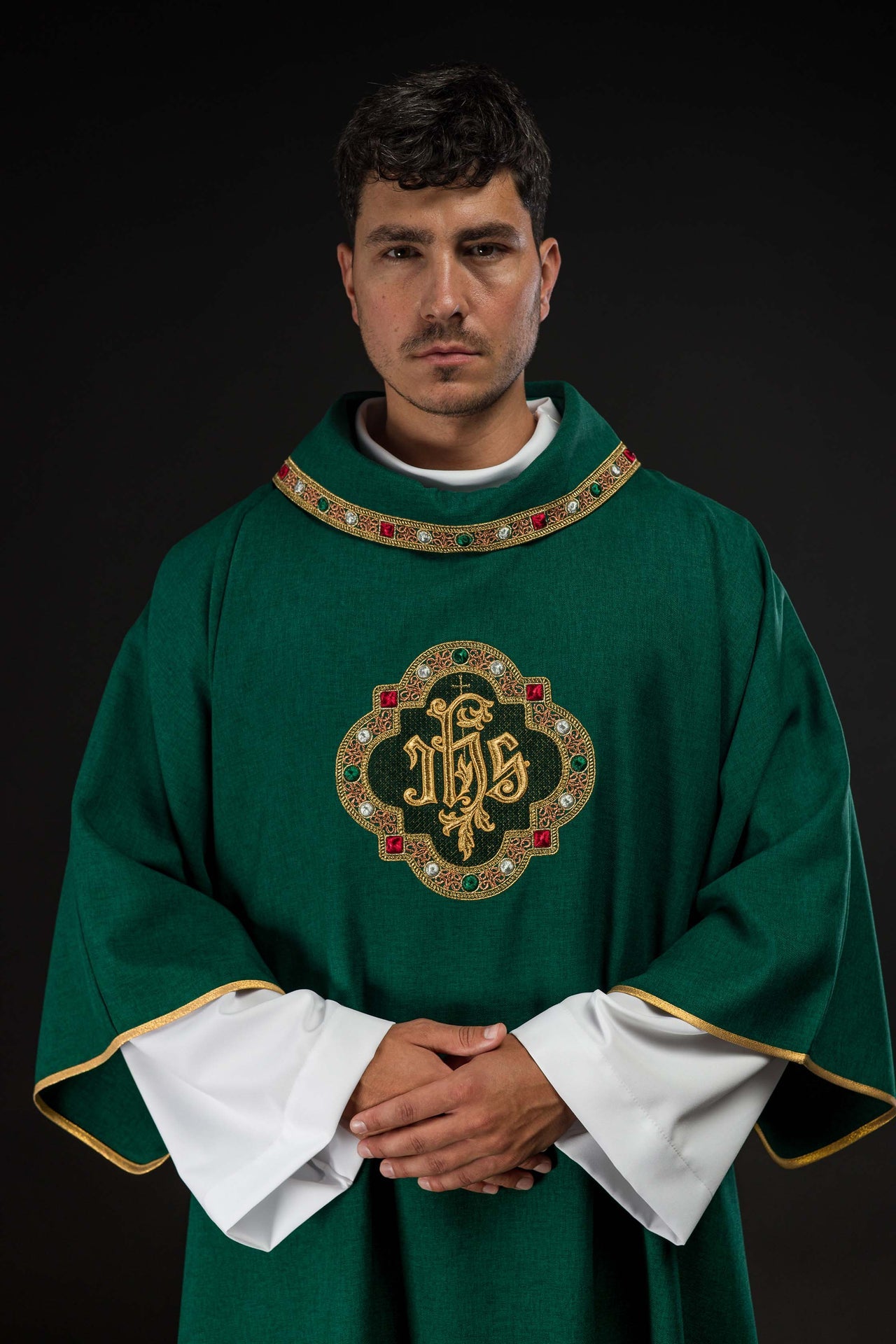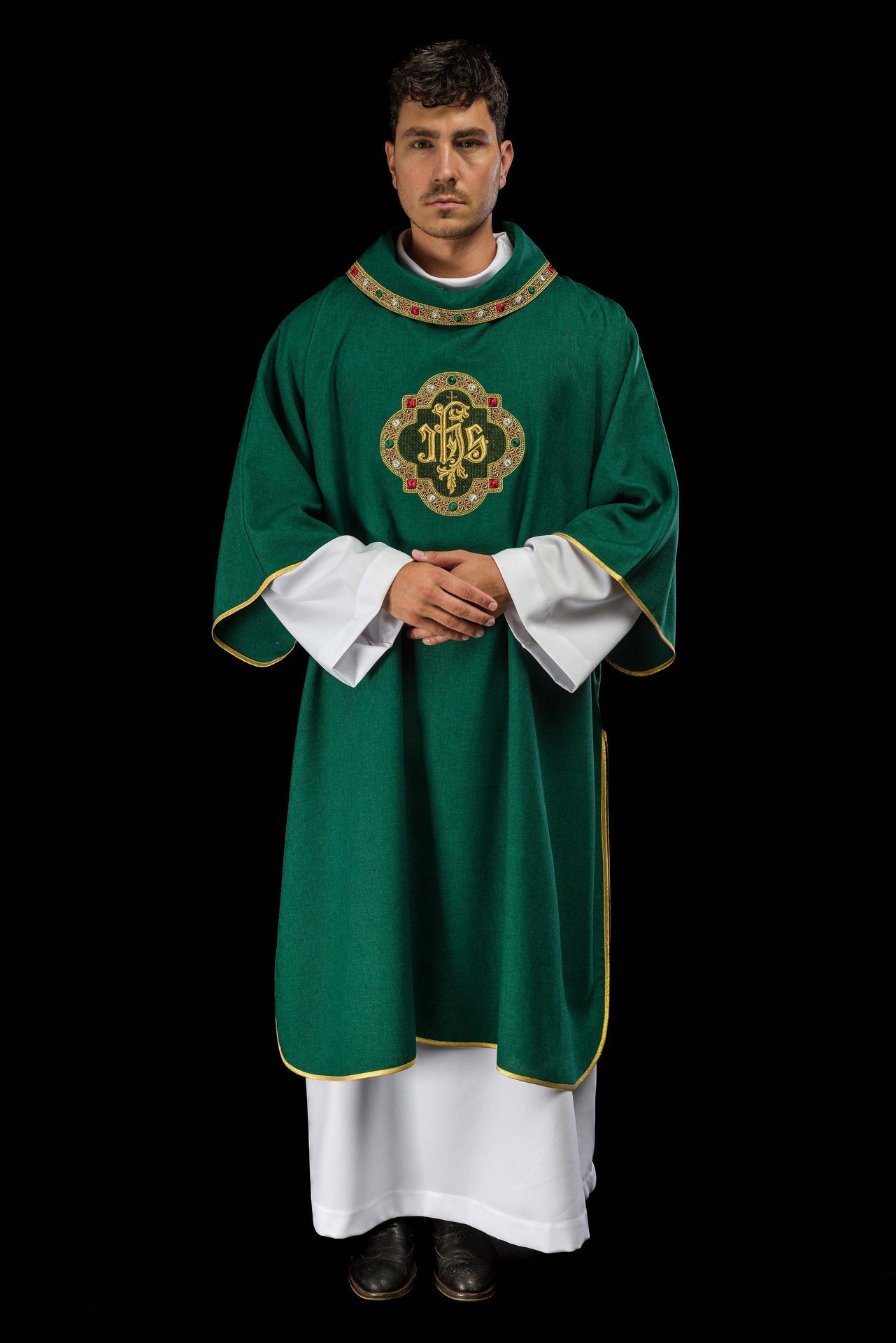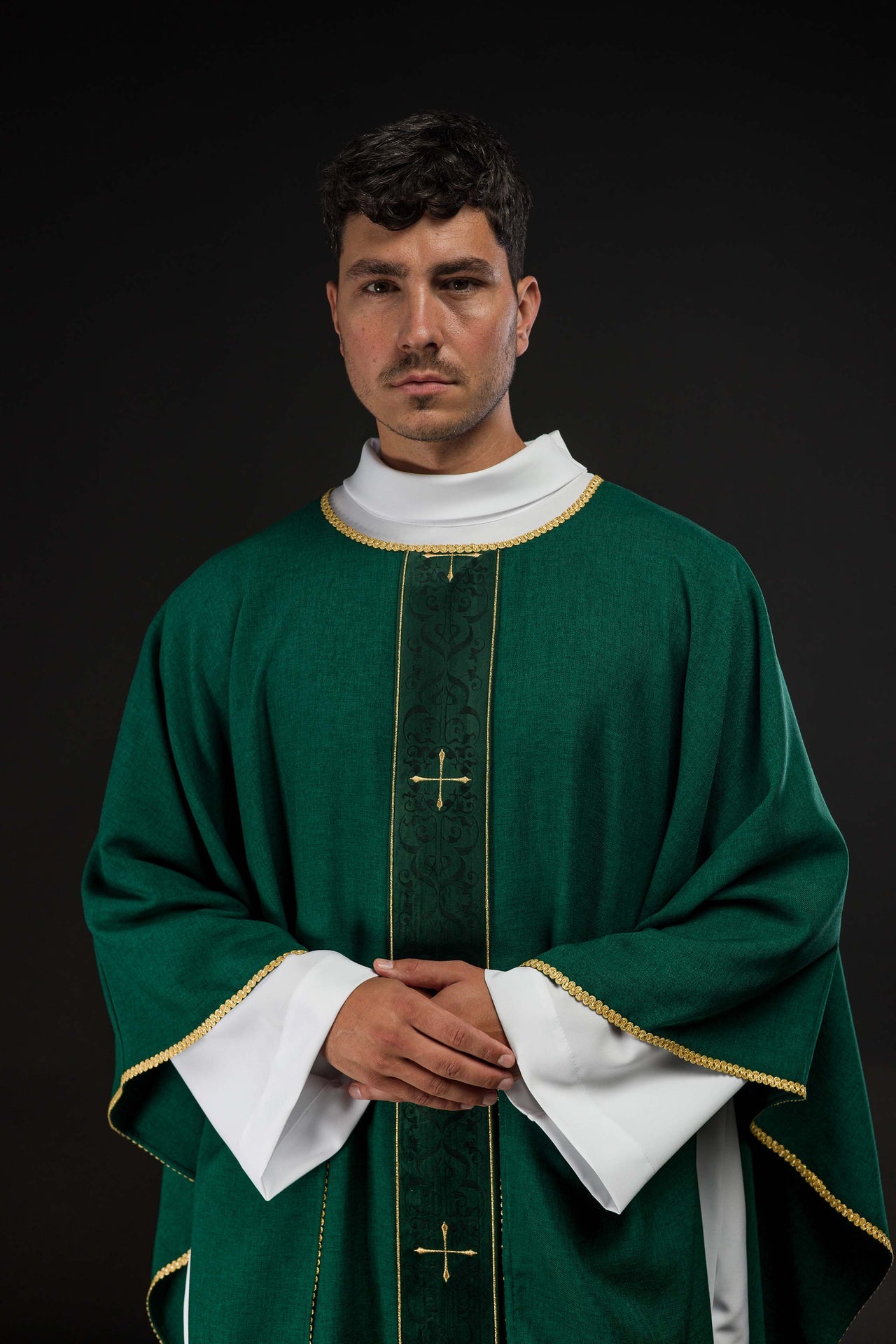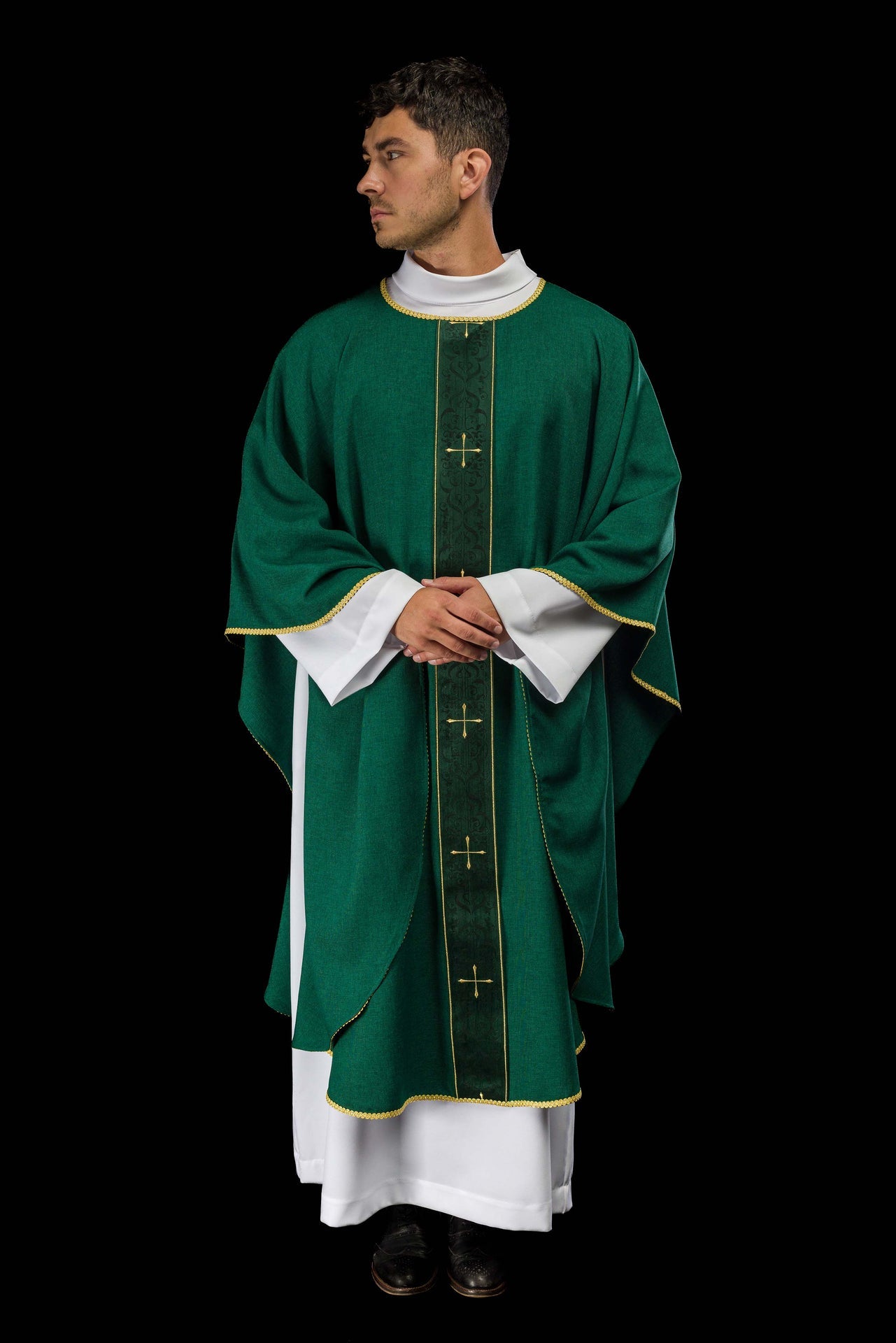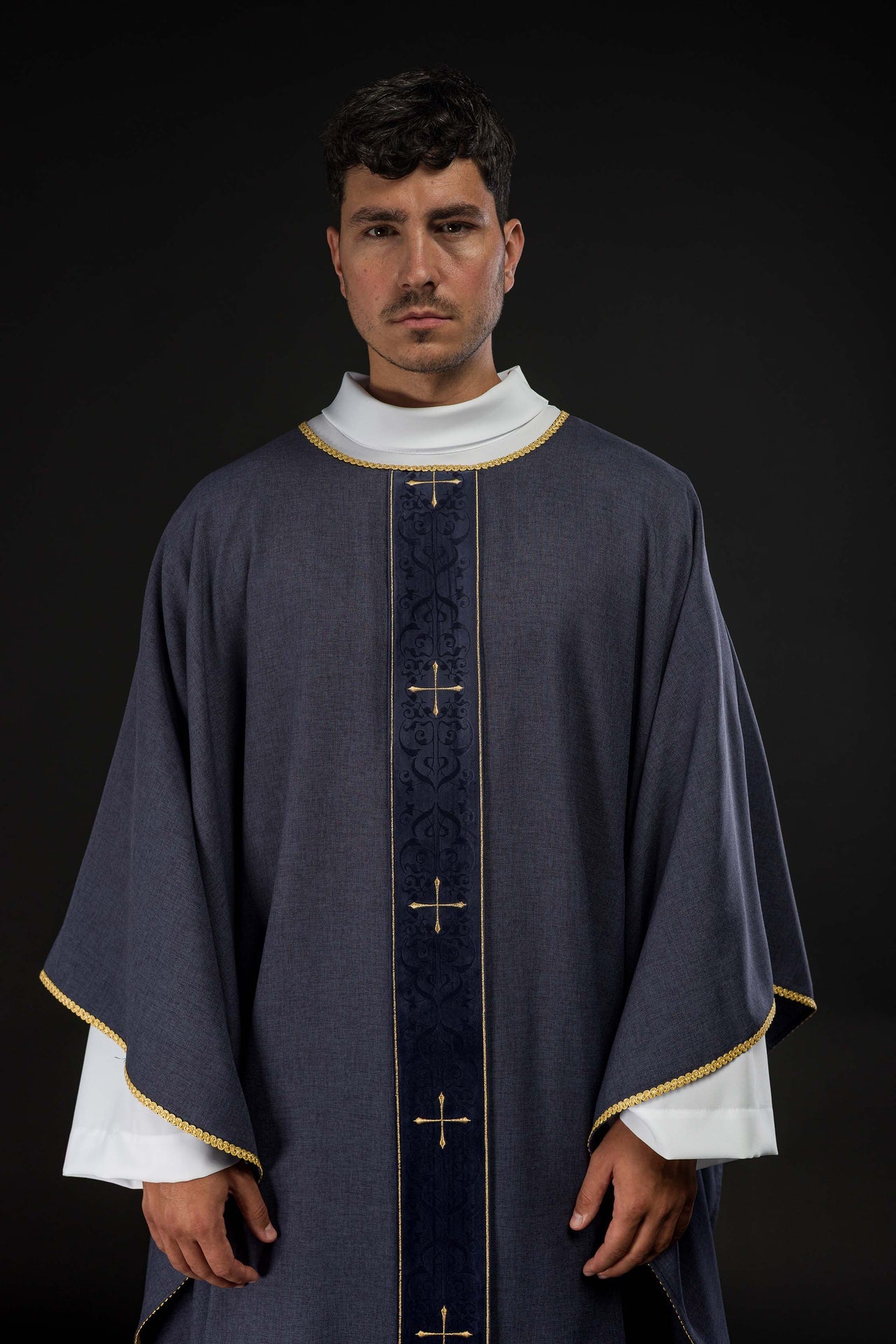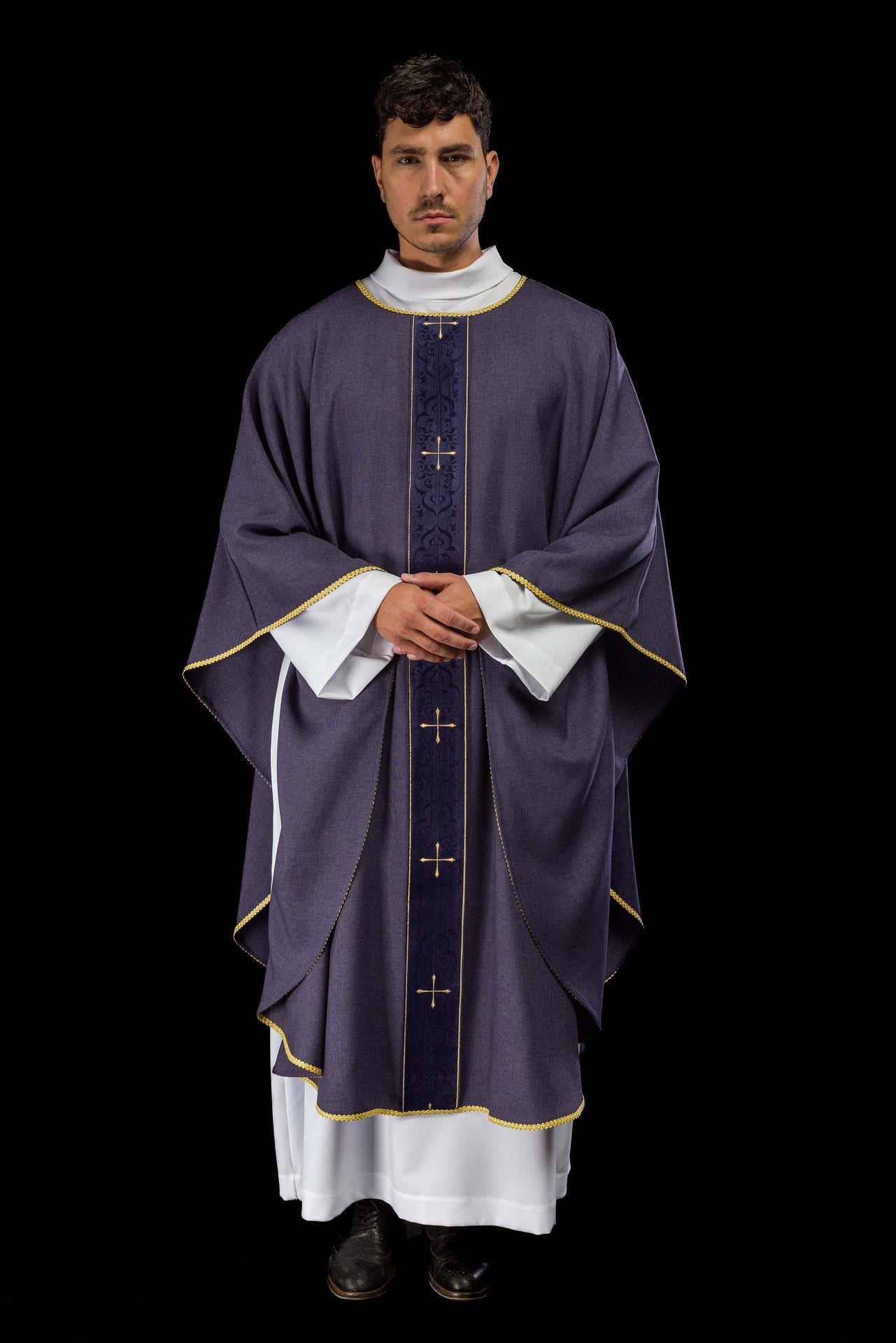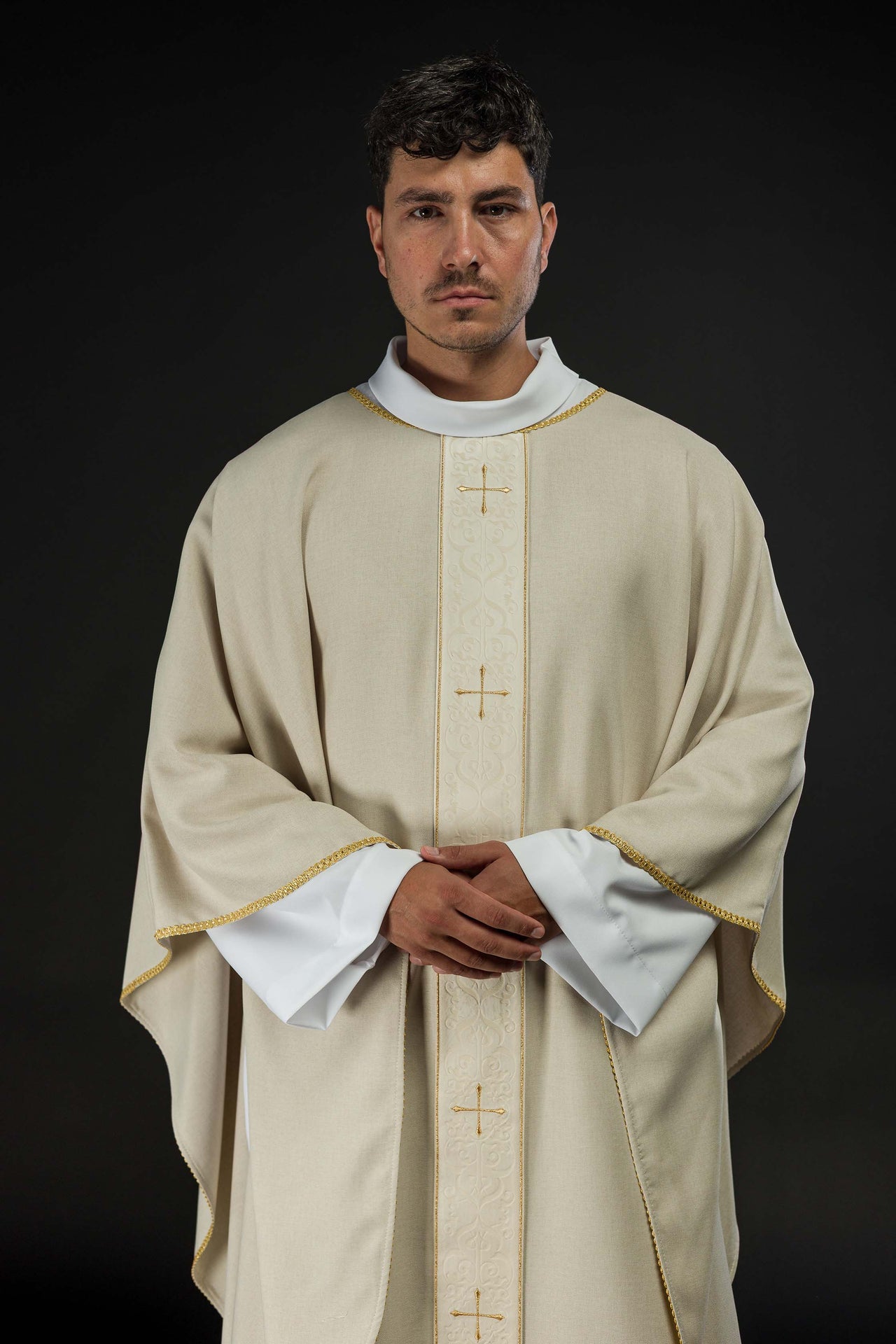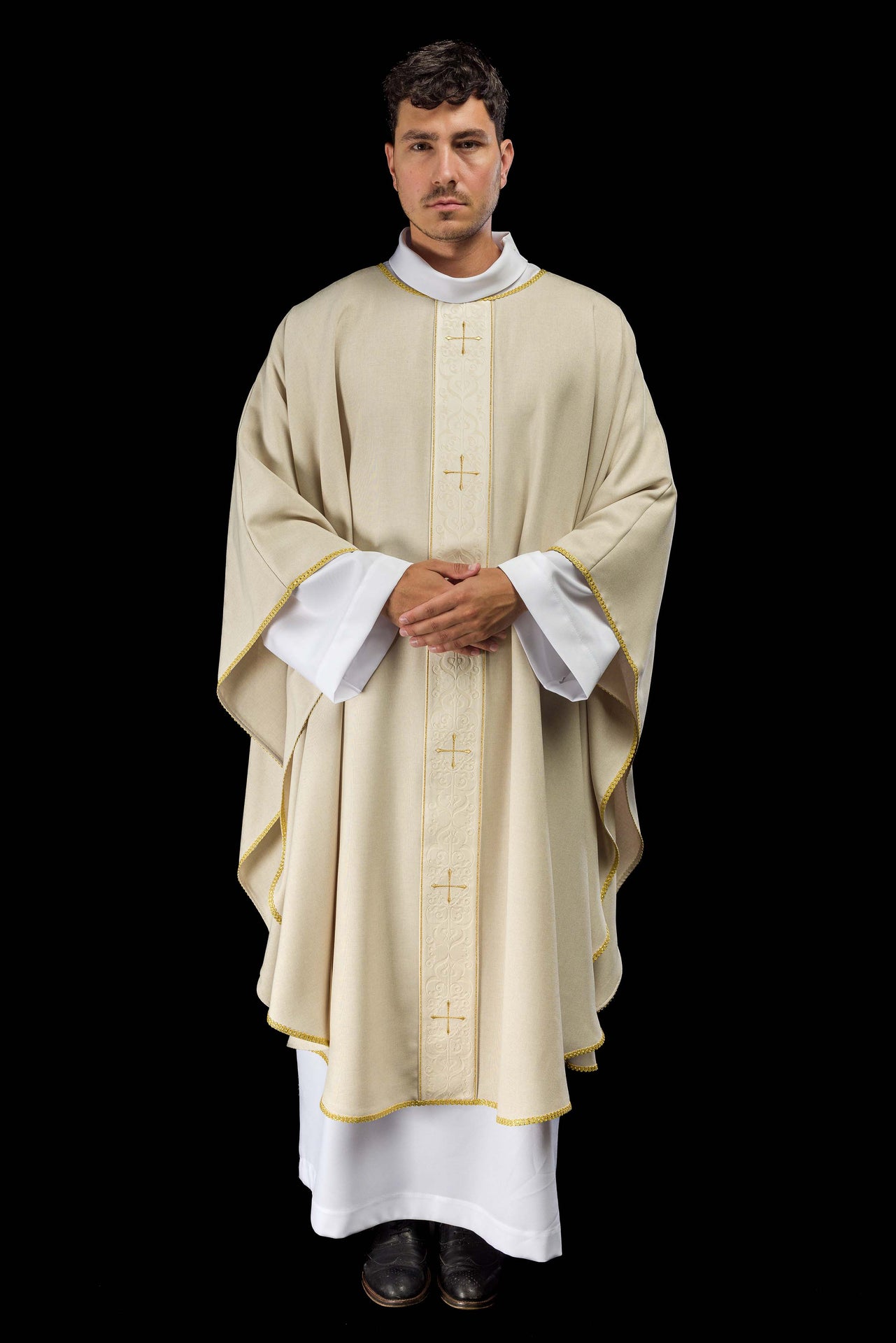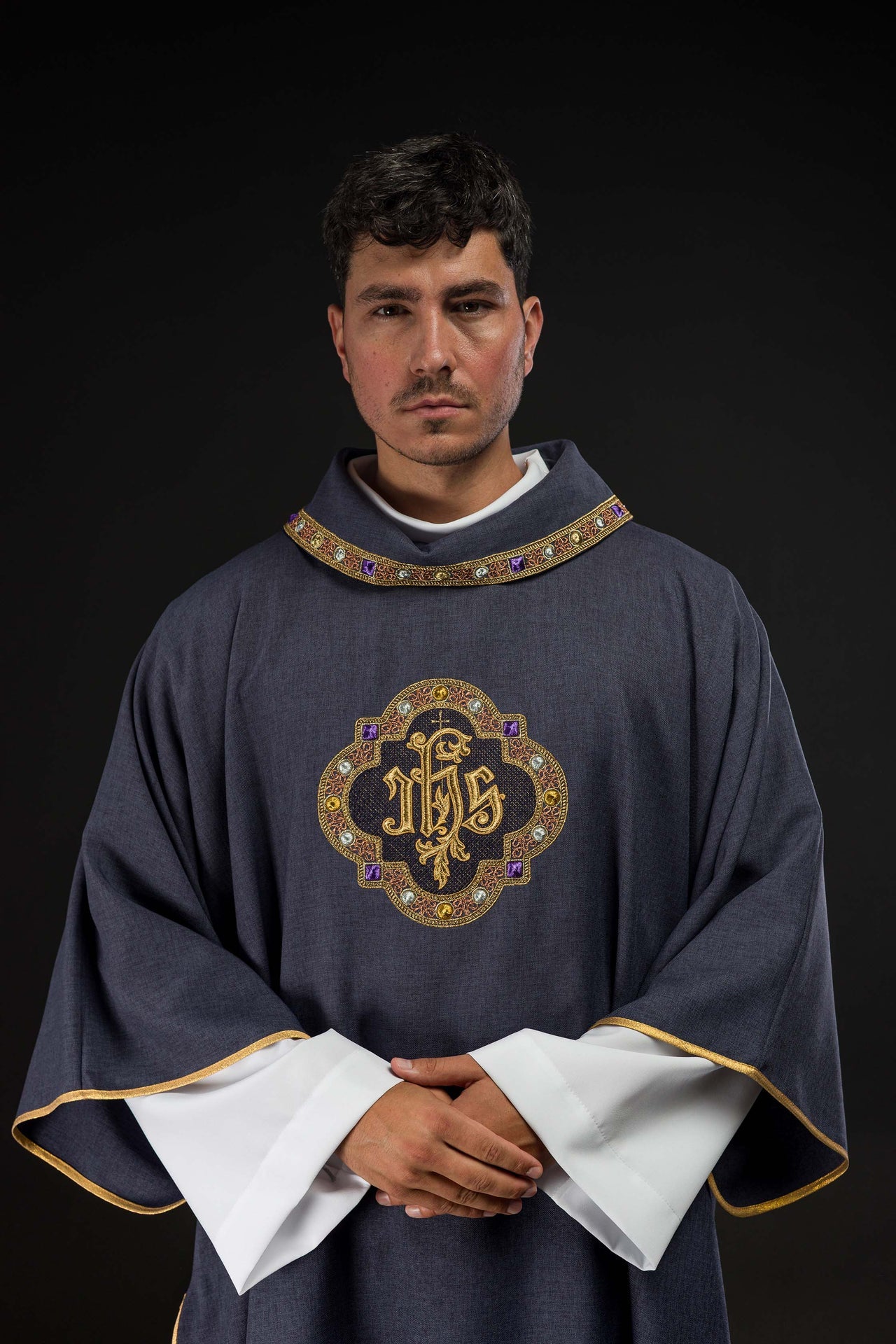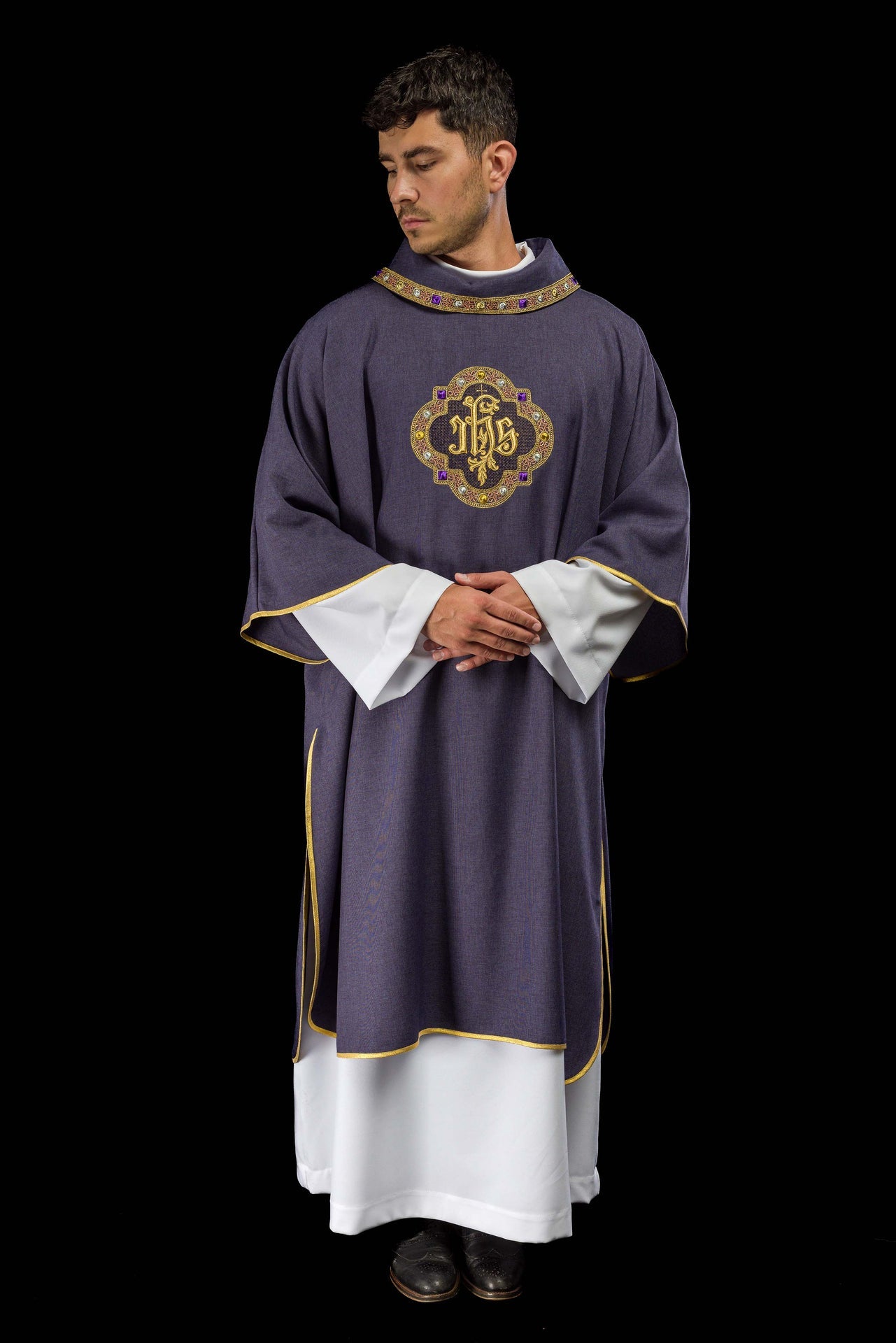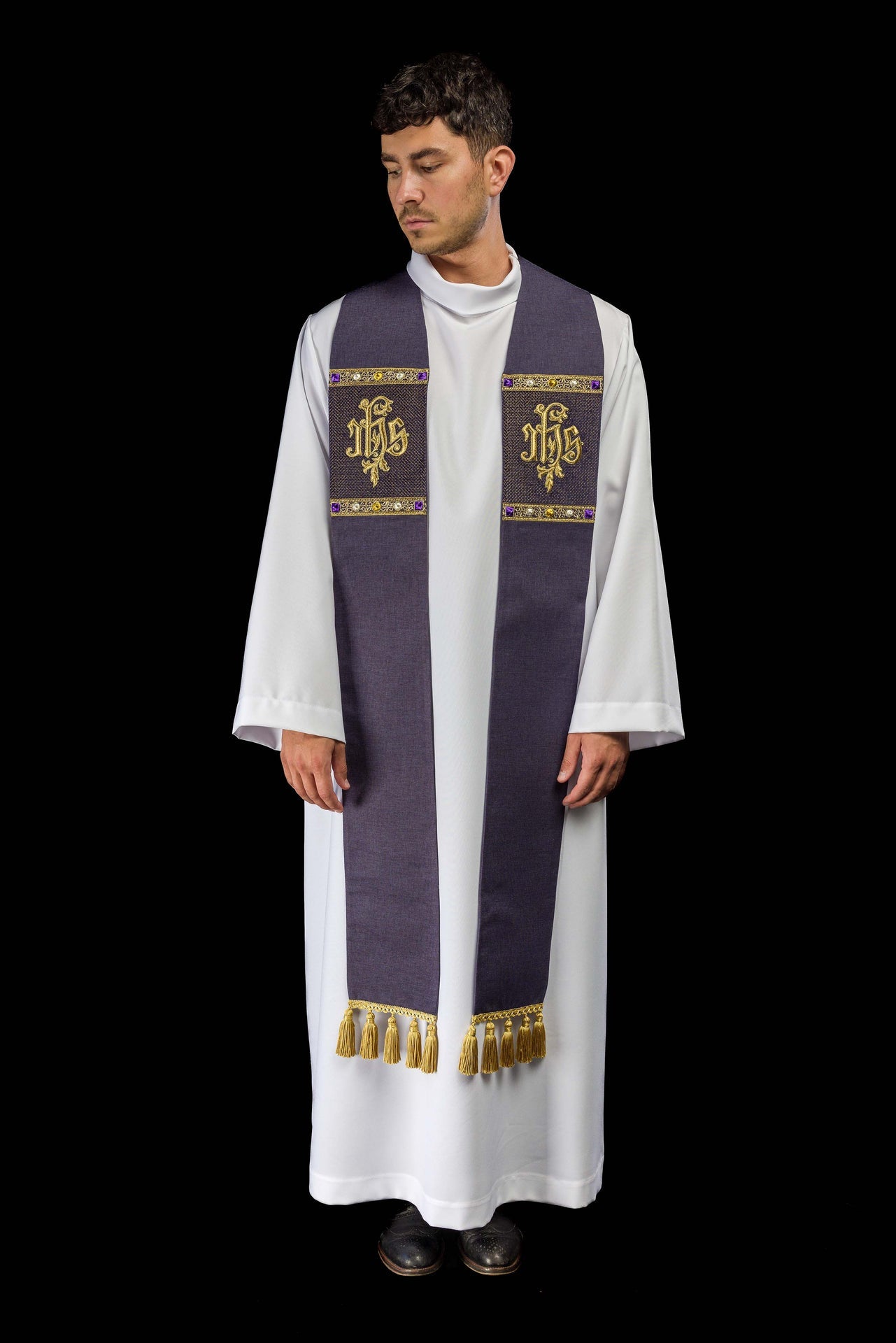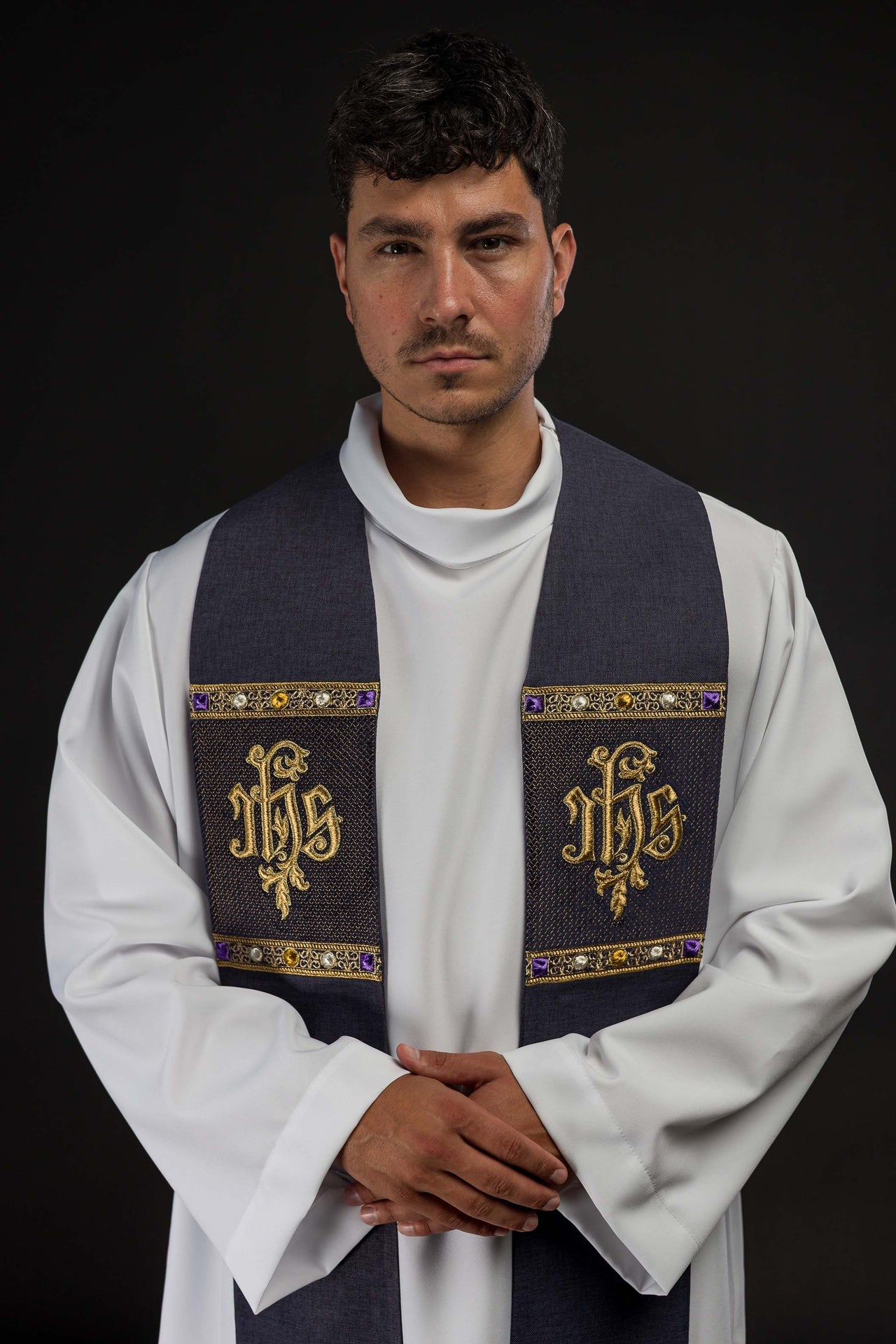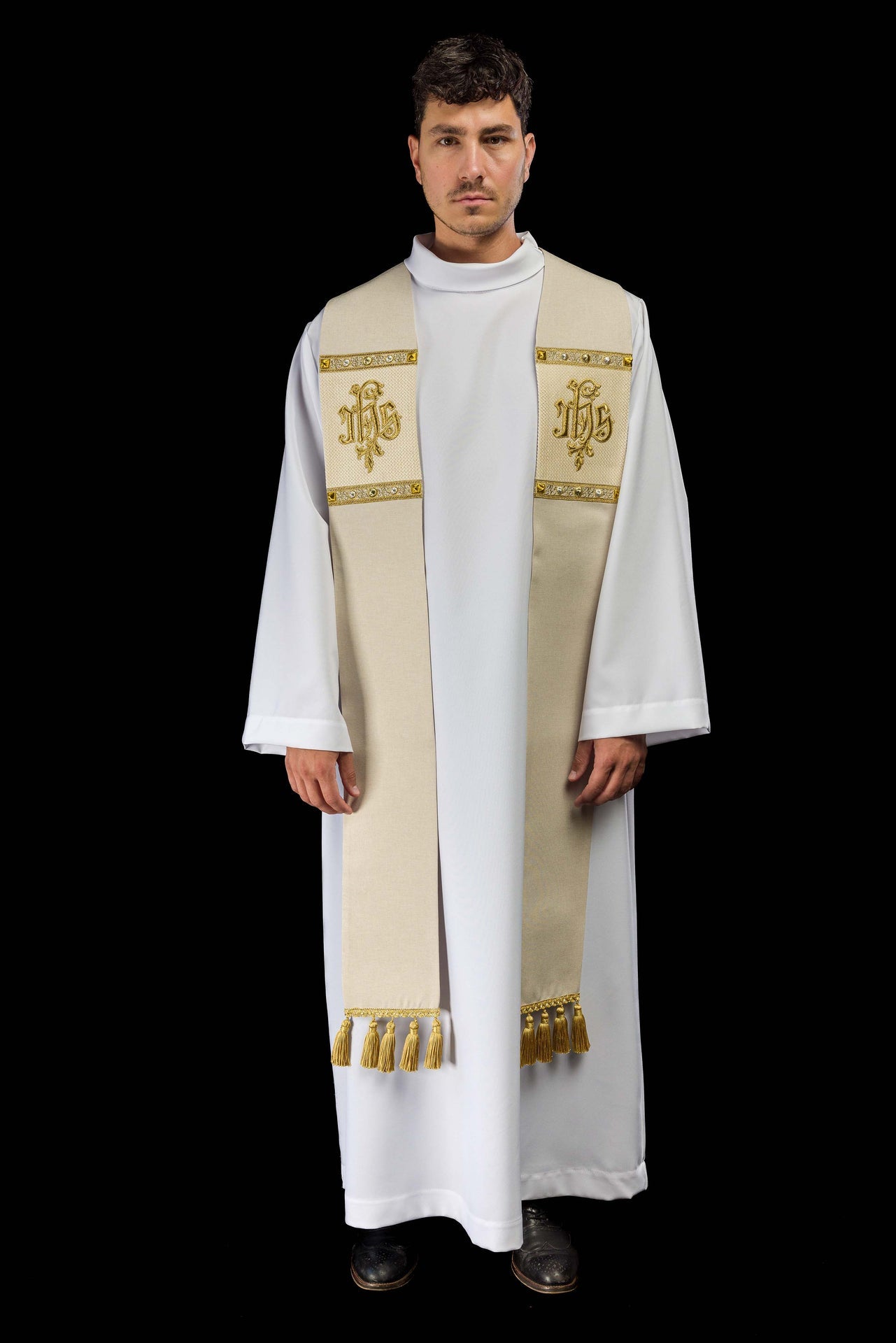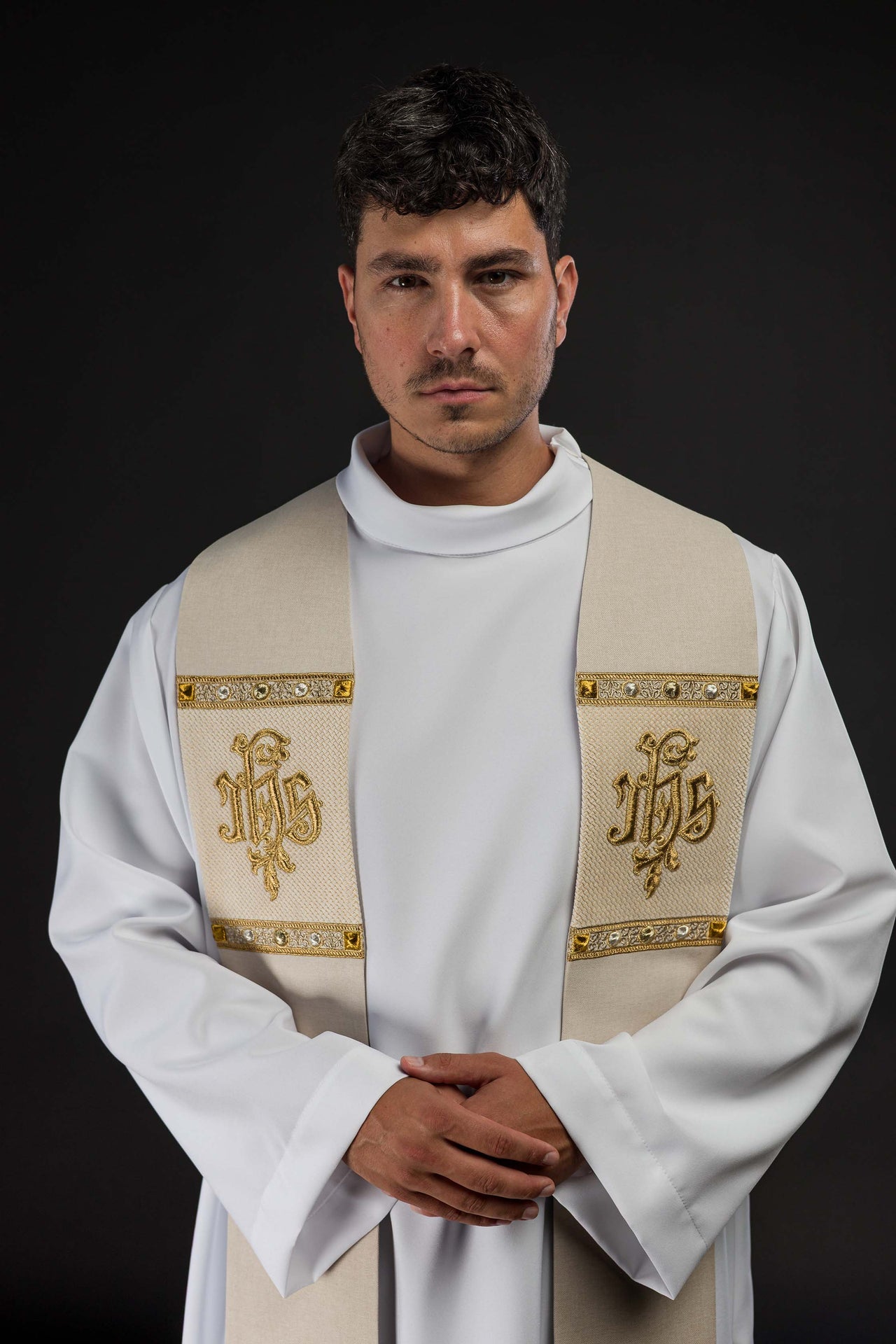HaftinaUSA.com is a distinguished online emporium specializing in liturgical items, with its ""Liturgical Vestments"" category standing out as a comprehensive collection of garments and accessories essential for sacred ceremonies. This category offers a wide range of products meticulously designed to elevate the worship experience for clergy and faithful alike. The ""Liturgical Vestment"" category on
HaftinaUSA.com features an extensive array of items indispensable for various liturgical occasions.
Among the showcased products are orphreys, chasubles, and chalice veils, meticulously crafted to reflect the reverence and solemnity of liturgical celebrations. During the Latin Rite Mass, priest vestments, typically worn, reflect the liturgical colors signifying different seasons. Orphreys, an essential component of liturgical attire, play a crucial role in adorning the sacred vestments worn during liturgical services. Available in various designs and styles, these orphreys add a touch of elegance and beauty to the sacred ceremonies, symbolizing the sacredness and dignity of the liturgy. Chasubles showcased in the ""Liturgical Vestments"" category are carefully designed to embody the spirit of the liturgical season or occasion. With exquisite details and intricate embroidery, these chasubles serve as a visual representation of the significance and solemnity of the liturgical celebration, inviting worshippers to enter into a deeper spiritual experience.
Liturgical Vestments are a significant aspect of religious attire in various Christian denominations, including the Roman Catholic and Eastern Orthodox traditions. These garments, typically made of fine cloth, hold deep symbolic meaning and are worn by clergy during sacred ceremonies and services within the church. Among the array of vestments worn by clergy, the chasuble stands out as the outermost garment worn during Mass by priests. This sleeveless robe, often elaborately adorned with intricate designs and symbols, signifies the authority and dignity of the priesthood. In the Roman Catholic tradition, the chasuble is worn over the alb and stole, while in the Eastern Orthodox tradition, it is accompanied by other vestments such as the epitrachelion and zone.
Priests and deacons wear distinct vestments tailored to their respective roles within the church. While priests typically wear the chasuble, deacons don the dalmatic, a garment characterized by its wide sleeves and ornate decorations. The dalmatic symbolizes the servant role of the deacon within the church hierarchy. Another essential vestment is the humeral veil, which is worn by clergy during specific rites, such as Benediction of the Blessed Sacrament. This rectangular cloth is draped over the shoulders and arms of the priest, symbolizing reverence and humility in handling sacred objects.
During liturgical services, clergy carefully adorn themselves with these vestments, each piece holding its unique significance. For instance, the alb, a long white robe worn by priests, symbolizes purity and the baptismal garment, while the stole represents the yoke of Christ and the authority of the priesthood. The arrangement of these vestments follows a precise ritual. For example, the priest drapes the humeral veil over his left shoulder, leaving it hanging down on his right hip, symbolizing the humility and reverence with which he handles the sacred vessels. Throughout history, liturgical vestments have evolved in style and design, reflecting cultural influences and theological interpretations. However, their fundamental purpose remains unchanged: to adorn clergy in garments befitting the sacredness of their ministry and to enhance the reverence of worship within the church. Altar servers assist in ceremonial duties, their garments worn in reverence to the holy spirit.
In conclusion, liturgical vestments play a vital role in the worship practices of Roman Catholic and Eastern Orthodox traditions, serving as tangible symbols of the sacred mysteries celebrated within the church. Through their careful selection and ceremonial donning, clergy honor the rich tradition and profound symbolism associated with these sacred garments.

